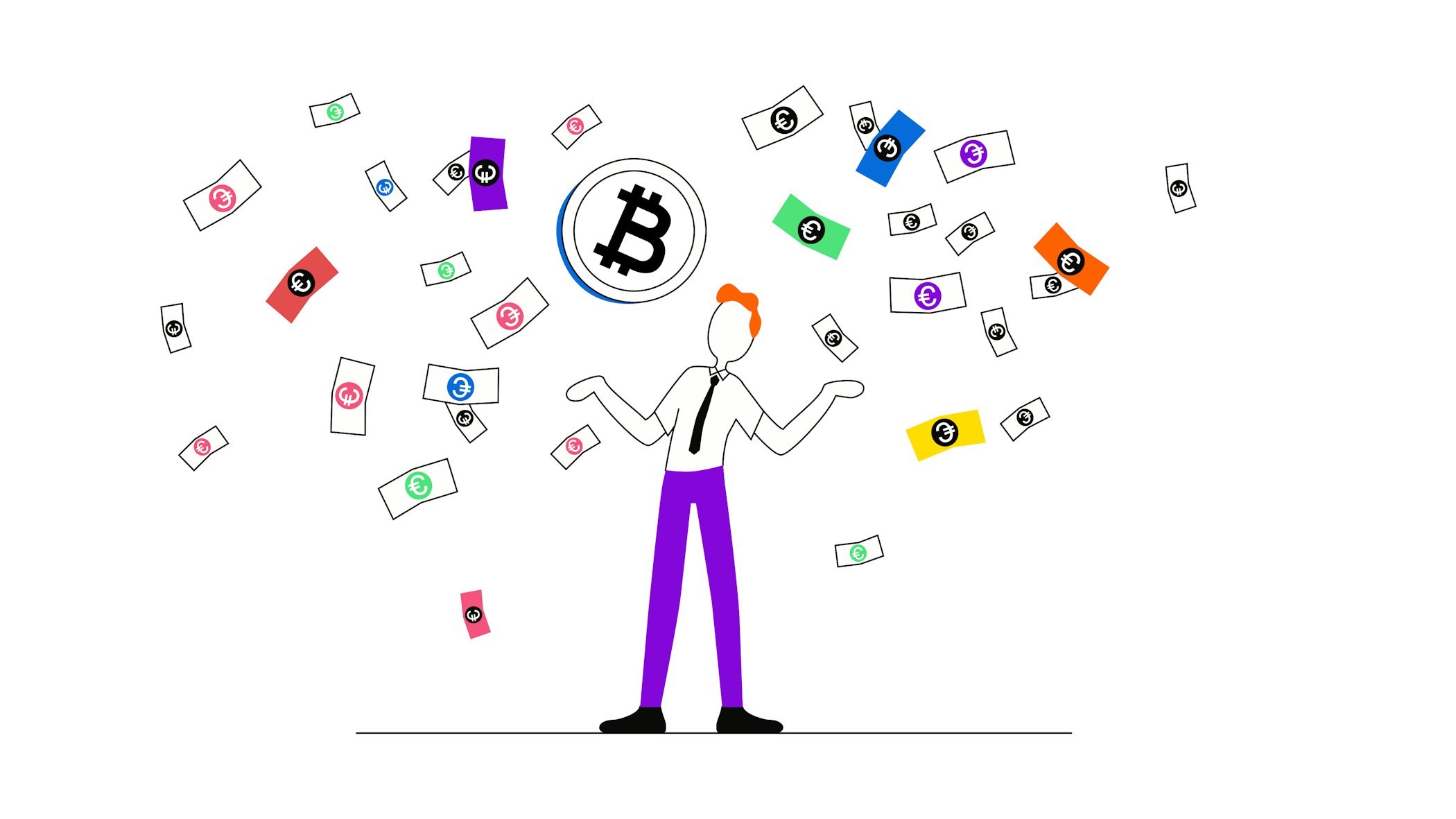
What determines the Bitcoin price?
Unlike fiat currencies, such as the Euro or the US-Dollar, the value of Bitcoin (BTC) is not defined by a single entity like a central bank. Instead, the price is influenced by supply and demand. Or, in simpler terms, by how much people are willing to pay for it.
The Bitcoin price is defined by supply and demand. When there is more demand for Bitcoin, the price goes up. When there is less demand, the price goes down.
Historically, global financial events and moments in popular culture have affected the Bitcoin price.
The maximum Bitcoin supply is fixed at an upper limit of 21,000,000 BTC.
Watch this Bitpanda Academy lesson as video
Watch on YouTubeNew to Bitpanda? Get started today!
Sign up hereWhat factors influence the Bitcoin price?
Generally speaking, supply and demand depend on a number of factors. Economic events, including price declines and increases on the stock and bond markets, as well as developments on a global scale, such as the coronavirus pandemic and Russia’s war on Ukraine, can all affect the demand and supply of things we give value. This is on top of regular economic cycles, which include phases of inflation, stagnation and recession, that require governments to take action to maintain the value of a currency.
But unlike fiat currencies, which are subject to the monetary policies of governments, the Bitcoin ecosystem is a fully decentralised monetary system. This means that no central authority regulates the currency, and the creation of bitcoins follows the rules of the protocol in a process called mining.
Since the creation of the very first block, all transactions in the Bitcoin network have followed a precise and inalterable process. Miners create new blocks by solving a mathematical puzzle, and new bitcoins are entered into circulation. The only provision in the Bitcoin protocol that entails a change from time to time is the block reward amount that miners receive in a process called Bitcoin halving. This is when the value of the block reward is cut in half every 210,000 blocks or approximately every four years. The purpose of halving is to decrease the number of new coins entering the network.
Halvings can affect the price of Bitcoin. Since the rewards are cut in half, new bitcoins become scarce. And this scarcity usually drives up the price, although this is by no means a certainty. Bitcoin’s price is further influenced by similar supply and demand factors listed above, along with events in popular culture and the general interest in cryptocurrencies and blockchain technology.
The most recent Bitcoin halving took place in April 2024, reducing the block reward from 6.25 BTC to 3.125 BTC. This event, designed to limit Bitcoin’s supply, has historically impacted its price and market trends. Bitpanda followed the halving with a big event, heck it out here.
Why is the Bitcoin price volatile?
Bitcoin has the highest trading volume among cryptocurrencies, but it’s still a small market compared to other global markets. This means that prices make bigger moves up or down with less money involved. If Bitcoin were to have the same trading volume as, for example, gold, then its behaviour would be very similar in terms of volatility.
As there are only a limited number of bitcoins in circulation and the creation of new bitcoins follows strict rules with a consistently decreasing output (because of shrinking rewards for miners), demand would have to follow the deflationary behaviour of Bitcoin to even theoretically keep prices stable.
News events that are detrimental or beneficial to the reputation of Bitcoin, uncertainty in the future intrinsic value of the cryptocurrency as a store of value, currency risks for large holders of Bitcoin regarding liquidation as well as security breaches may also influence the Bitcoin price.
Could the Bitcoin price go to zero?
Short answer: Yes. This is because the worth of a currency (or anything, really), is based on its perceived value. There are some fiat currencies that are long out of use but are still sought after by collectors, who pay good money for a 200-year-old coin.
It’s worth noting that currencies that are no longer used usually fail as a result of the introduction of successors or incidents like hyperinflation. Such developments tend to significantly devalue affected currencies. In the case of Bitcoin, hyperinflation is not possible as Bitcoin cannot be created arbitrarily and its production is fixed to a certain amount.
In the end, the true causes of a decline in Bitcoin’s price could be any or a combination of the following: political pressure, technological failures, media coverage under the umbrella term of FUD (any type of news coverage that can potentially spread “Fear, Uncertainty, and Doubt), and more. Until Bitcoin really reaches the majority of the world, we can keep expecting both significant price increases as well as significant price declines to occur. For now, volatility rules.
Are you ready to buy cryptocurrencies?
Get started nowThis article does not constitute investment advice, nor is it an offer or invitation to purchase any digital assets.
This article is for general purposes of information only and no representation or warranty, either expressed or implied, is made as to, and no reliance should be placed on, the fairness, accuracy, completeness or correctness of this article or opinions contained herein.
Some statements contained in this article may be of future expectations that are based on our current views and assumptions and involve uncertainties that could cause actual results, performance or events which differ from those statements.
None of the Bitpanda GmbH nor any of its affiliates, advisors or representatives shall have any liability whatsoever arising in connection with this article.
Please note that an investment in digital assets carries risks in addition to the opportunities described above.